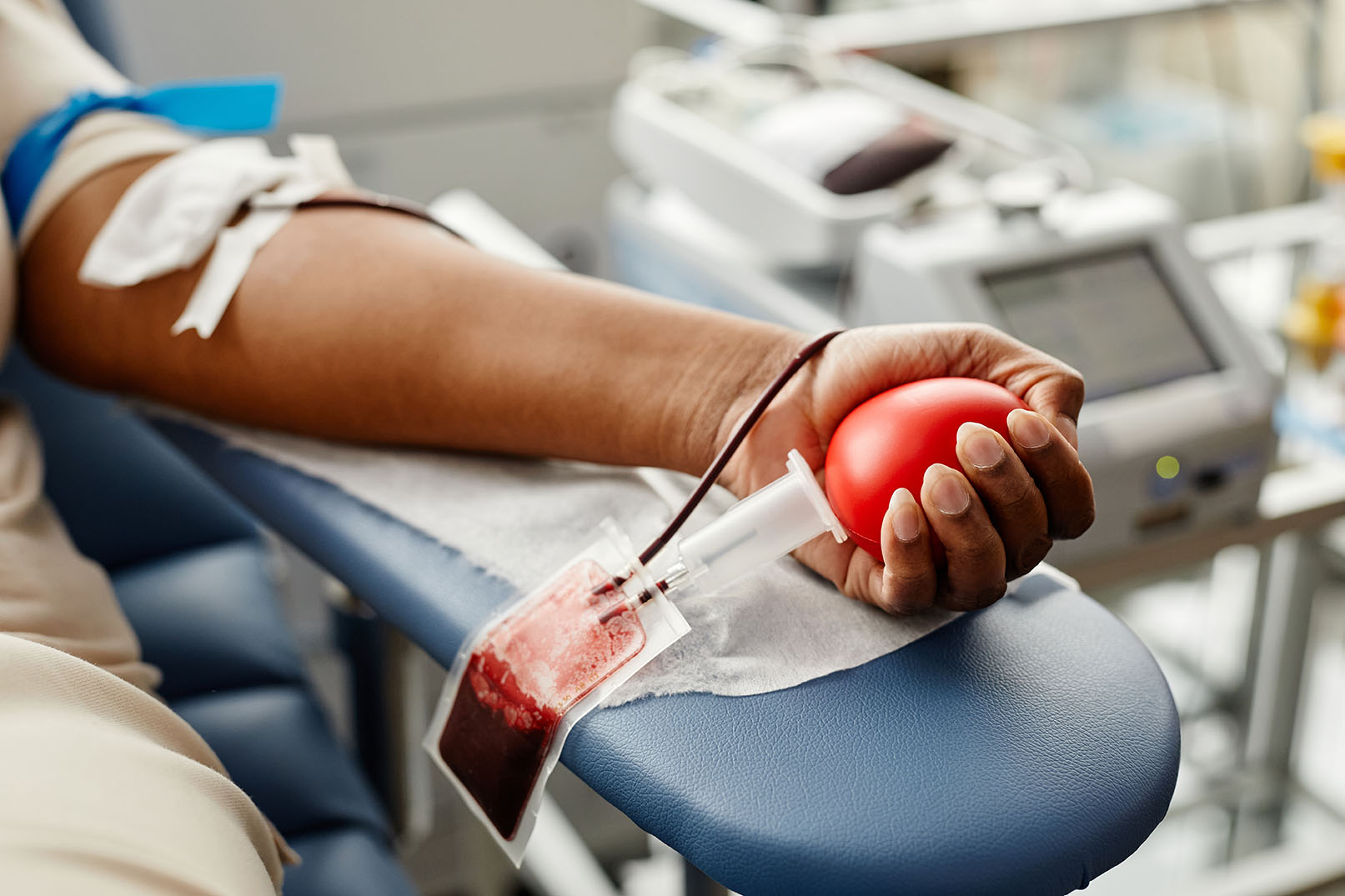
< Back
blood
Definition
Blood is a fluid tissue that circulates through the body. It is made up of plasma, red blood cells, white blood cells, and platelets.
Plasma is the liquid part of blood. It is mostly water, but it also contains dissolved proteins, nutrients, and waste products.
Red blood cells are the most abundant cells in blood. They carry oxygen from the lungs to the tissues and carbon dioxide from the tissues to the lungs.
White blood cells are responsible for fighting infection. They are also involved in the immune response.
Platelets are responsible for blood clotting. They help to stop bleeding by forming a clot at the site of an injury.
Blood is essential for life. It transports oxygen and nutrients to the tissues, removes waste products, and helps to fight infection.
How can the word be used?
The blood rushed to my head when I saw the needle.

Different forms of the word
Noun:
blood (the red liquid that circulates through the body).
blood (a family or lineage).
blood (courage or determination).
Adjective:
blood (of or relating to blood).
blood (red in colour).
Verb:
to bleed (to lose blood).
Etymology
The word "blood" comes from the Old English word "blōd," which means "red liquid that circulates through the body." The Old English word "blōd" is related to the Old Norse word "blóð" and the German word "Blut.".
Question
What do you know about blood?
AQA Science Exam Question and Answer
Question:
Define "blood" and explain its importance in the human body. Describe the main components of blood and their respective functions.
Answer:
Blood is a vital bodily fluid that circulates through the circulatory system, transporting essential substances throughout the body and maintaining overall homeostasis.
Components of Blood and Their Functions:
Red Blood Cells (Erythrocytes): They contain haemoglobin, a protein that binds and carries oxygen from the lungs to body tissues. Red blood cells are crucial for oxygen transport and give blood its characteristic red colour.
White Blood Cells (Leukocytes): They play a vital role in the immune system, defending the body against infections and foreign invaders. White blood cells can detect and destroy pathogens, bacteria, and viruses to maintain overall health.
Platelets (Thrombocytes): They are essential for blood clotting. When blood vessels are damaged, platelets form clots to prevent excessive bleeding and promote wound healing.
Plasma: It is the liquid component of blood, containing water, proteins, electrolytes, and various nutrients. Plasma helps transport nutrients, hormones, and waste products throughout the body, maintaining fluid balance.
Hormones and Other Molecules: Blood also carries hormones, enzymes, and other signalling molecules that regulate various physiological processes, such as metabolism and growth.
The functions of blood are diverse and critical for sustaining life. It delivers oxygen and nutrients to tissues, removes waste products, regulates body temperature, supports the immune system, and ensures proper clotting to prevent excessive bleeding.